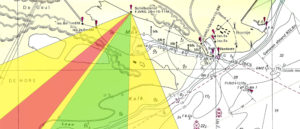Publication: European Court of Justice 4th October 2018, ECLI:EU:C:2018:806
On 19 November 2013, Al Bosco, a property company established under Italian law, obtained from the Tribunale di Gorizia (District Court, Gorizia, Italy) a preventive attachment order authorising it to obtain preventive attachment in a maximum amount of EUR 1 million against the debtor’s movable and immovable, tangible and intangible assets.
On 22 August 2014, that preventive attachment order was declared enforceable in Germany by the Landgericht München (Regional Court, Munich) pursuant to Regulation No 44/2001.
On 23 April 2015, Al Bosco applied for the registration of a mortgage against the debtor’s real property located in Germany, namely a residential apartment and two underground parking spaces. Its application was rejected by the Amtsgericht München — Grundbuchamt (Land Registry attached to the Local Court, Munich, Germany).
Al Bosco challenged the decision of that court before the Oberlandesgericht München (Higher Regional Court, Munich, Germany). The latter court dismissed the action on the ground that the time limit of one month, laid down in Paragraph 929(2) of the ZPO, had expired. It considered that that time limit applies to the enforcement of the preventive attachment instrument issued by an Italian court which, having been recognised in Germany, is comparable to a seizure instrument issued by a German court. Moreover, it found that that provision concerned the enforcement of such an instrument obtained in another Member State, which is a matter for the lex fori, rather than the validity of a preventive attachment instrument.
On 15 June 2016, Al Bosco brought an appeal against the decision of the Oberlandesgericht München (Higher Regional Court, Munich). In its appeal, it submitted that the time limit for enforcement of the attachment laid down in Article 675 of the Italian Civil Procedure Code — whereby the order authorising the attachment loses its effects if it is not enforced within the period of 30 days from the date on which the order was made — had been observed, as preventive attachments had been effected within the period of 30 days from the date of the order of 19 November 2013. It maintains that there can be no requirement to observe the time limit laid down in German law in addition to that laid down in Italian law.
The referring court is unclear as to whether a national provision, such as Paragraph 929(2) of the ZPO, relates to the enforceability of the order authorising a preventive attachment which, in accordance with Article 38 of Regulation No 44/2001, comes within the remit of the law of the Member State in which that instrument was issued, or whether that provision refers to the enforcement, in the strict sense, of an enforceable instrument issued in another Member State, since such rules come, in principle, within the scope of the law of the Member State addressed.
The referring court notes that the basis of the enforcement in Germany of a foreign preventive attachment instrument adopted in another Member State is the national decision relating to the declaration of enforceability. Where the registration of a debt-securing mortgage is sought, the enforcement conditions laid down by German law are examined independently by the Land Registry. According to the referring court, the appeal court correctly classed, without it being disputed in the appeal, the preventive attachment delivered in Italy, in the light of its function, as a seizure instrument as provided for in German law which is enforced, in accordance with Paragraph 932 of the ZPO, by means of an application for the registration of a debt-securing mortgage. The enforcement conditions applicable in the present case would therefore be those laid down in the German provisions on the enforcement of seizure orders, in particular Paragraph 929(2) of the ZPO.
The referring court states that, where the time limit laid down in Paragraph 929(2) of the ZPO has expired, the preventive attachment order can no longer be enforced. In that connection, the referring court specifies that, where it applies to decisions given in other Member States, that time limit is calculated from the date on which the declaration of enforceability is notified to the creditor. The purpose of that provision is to protect debtors so as to prevent decisions adopted further to summary proceedings for interim relief remaining enforceable for a relatively long period of time, despite any changes in the situation at hand.
The referring court considers that, first and from a technical perspective, the time limit for enforcement is likely to come within the remit of the national law of the court seised and is not governed by Regulation No 44/2001, as is apparent from the case-law of the Court (judgments of 3 October 1985, Capelloni and Aquilini, 119/84, EU:C:1985:388, paragraph 16; of 29 April 1999, Coursier, C‑267/97, EU:C:1999:213, paragraph 28; and of 28 April 2009, Apostolides, C‑420/07, EU:C:2009:271, paragraph 69). Secondly, that time limit leads to the instrument ceasing to be enforceable as a result of the passage of time. The effect of that time limit would ultimately be no different to the instrument being set aside in the appeal proceedings. Accordingly, the application of that time limit with respect to a preventive attachment order issued in another Member State could be incompatible with the case-law of the Court of Justice, according to which the application of the procedural rules of the Member State in which enforcement is sought must not undermine the effectiveness of Regulation No 44/2001 by frustrating the principles laid down by the regulation itself (judgments of 3 October 1985, Capelloni and Aquilini, 119/84, EU:C:1985:388, paragraph 21, and of 28 April 2009, Apostolides, C‑420/07, EU:C:2009:271, paragraph 69).
Lastly, the referring court states that national case-law and jurisprudence are divided so far as concerns the scope of Paragraph 929(2) of the ZPO. In that connection, some German courts have declared that that provision concerns the enforceability of orders authorising preventive attachments and can apply only to German attachment instruments, while other courts have held that that provision also applies to attachment instruments issued in other Member States and which have been declared enforceable in Germany. The appeal court considered that it is appropriate to examine the observance of the time limit for enforcement laid down by the law of the Member State of origin in the enforceability procedure together with that laid down by the law of the Member State addressed during enforcement in the strict sense.
Moreover, as an aspect of comparative law, the referring court notes that the Tribunal Supremo (Supreme Court, Spain) takes the view that it is appropriate to apply the enforcement period of five years, laid down in Article 518 of the Ley de Enjuiciamiento Civil (Civil Procedure Code), also to judicial decisions given in the other Member States and which are meant to be declared enforceable in Spain, in accordance with Article 38 et seq of Regulation No 44/2001.
In those circumstances, the Bundesgerichtshof (Federal Court of Justice, Germany) decided to stay proceedings and refer the following question to the Court for a preliminary ruling:
‘Is it compatible with Article 38(1) of Regulation No 44/2001 to apply a time limit which is laid down in the law of the State in which enforcement is sought, and on the basis of which an instrument may no longer be enforced after the expiry of a particular period, also to a functionally comparable instrument issued in another Member State and recognised and declared enforceable in the State in which enforcement is sought?’
The Court of Justice ruled that Article 38 of Regulation No 44/2001 must be interpreted as not precluding legislation of a Member State, such as that at issue in the main proceedings, which provides for the application of a time limit for the enforcement of a preventive attachment order, from being applied in the case of an order which has been adopted in another Member State and is enforceable in the Member State in which enforcement is sought.

